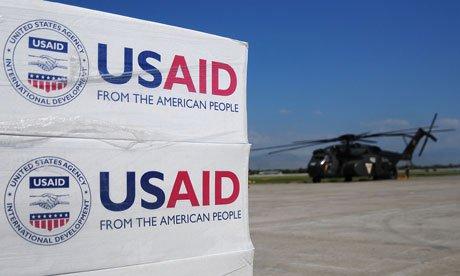The United States continues to lead the world in foreign aid assistance. While substantial, less than 1% of the United States’ GDP is designated to foreign aid assistance. In 2010 the United States obligated approximately $38 billion in economic assistance and $15 billion in military assistance, amounting to $53 billion total. 182 countries received $38 billion of U.S. economic assistance.
Out of that total, Afghanistan received $5 billion, more than any other recipient. From 2008-2010 Afghanistan received the most foreign aid assistance from the United States in both obligations and disbursements. According to the World Bank,97% of Afghanistan’s GDP is reliant on foreign aid. Afghanistan has taken over ‘top US aid recipient’ title from Iraq, which was the top recipient of U.S. foreign aid assistance from 2003-2007. In order to ease the United States’ departure from Afghanistan, the U.S, along with several other countries pledged $16 billion in development aid through 2015 at a conference in Tokyo recently.
The United States fiscal year 2013 foreign aid budget is projected to total $56.1 billion. This is an increase compared to the FY2012 foreign aid budget, which amounted to $47 billion. The increase may reflect the new $16 billion the U.S. pledged to Afghanistan through 2015. But what happens after 2015?
Here is a breakdown of the top recipients of United States foreign aid assistance categorized by region based off of 2010 data provided by USAID:
1. Afghanistan – $4.647 billion2. Pakistan – $1.940 billion
3. Indonesia – $313 million 1. Georgia – $420 million2. Russia – $379 million
3. Moldova – $308 million 1. Haiti – $1.406 billion2. Colombia – $678 million
3. Mexico – $622 million1. Iraq – $1.082 billion
2. West Bank/Gaza – $693 million
3. Jordan – $463 million 1. Ethiopia – $981 million2. Sudan – $871 million
3. Kenya – $816 millionSource: USAID Foreign Assistance Database
The purposes of these numbers are contentious depending on what one’s views are on foreign aid. However, the imperative question is, what would happen if the U.S. decided to rescind aid to these major recipients? In just one instance, Sen. Rand Paul has recently threatened to lead the charge on the Hill to cut aid to Pakistan for imprisoning a doctor who helped American forces locate Osama bin Laden.
It is more than clear that recipients benefit heavily from aid and citizens of the recipients have grown to rely and depend on the aid. However the reliance could become dangerous if the U.S. decided to make major budget cuts in the future to foreign aid. Or, if any type of conflict were to occur between the U.S. and a recipient, aid would most likely be rescinded. After all, the U.S. currently faces a major deficit and a number of domestic issues. One can only wonder what the future is for foreign aid.
